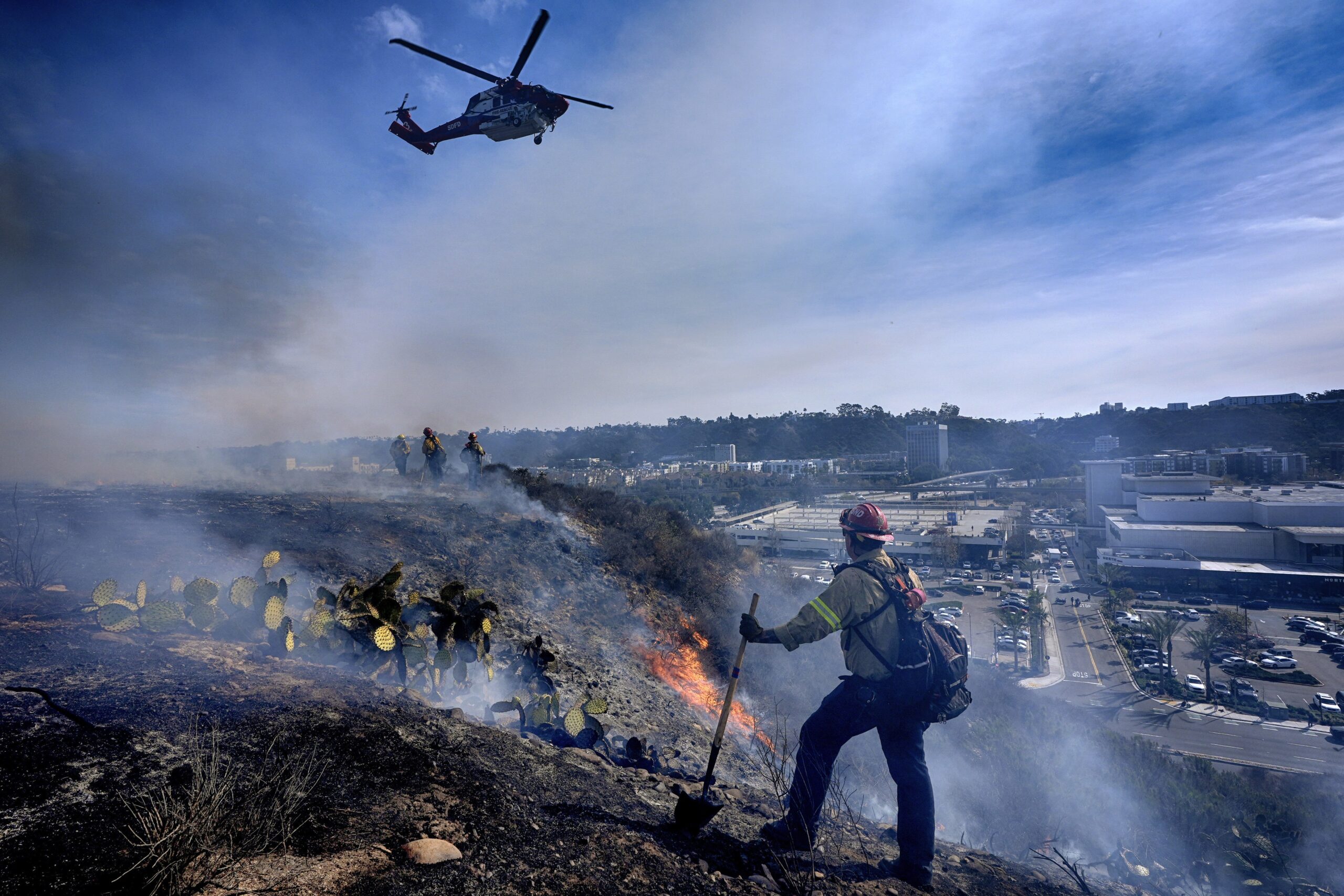Hama, a city in central Syria, has long been a symbol of both defiance and repression, and it is now once again at the center of the country’s ongoing civil war. Recently, as the war enters its 13th year, Syrian rebel forces have made significant strides toward capturing this strategically important city, which has been a focal point of government brutality during the conflict. With rebel forces closing in, the city finds itself at the heart of a larger struggle between the Assad government and various opposition factions, making it a key battleground in the Syrian civil war.
The Legacy of Hama: A History of Brutality and Resistance
To understand the significance of Hama in Syria’s civil war, one must look at its history, particularly its tragic legacy of government violence. In 1982, during the rule of Hafez al-Assad, father of the current Syrian president Bashar al-Assad, Hama was the site of one of the most brutal episodes in Syria’s modern history. The city, which had been a stronghold of the Muslim Brotherhood’s opposition to the Assad regime, was subjected to a savage military assault in which thousands of civilians were killed, and much of the city was destroyed. The Hama massacre remains a stark symbol of the regime’s ruthlessness in quelling dissent.
This event shaped the collective memory of Hama’s residents and continues to resonate in the context of the ongoing war. The brutal crackdown by the government during the 1982 uprising left a deep scar on the city and established a lasting connection between Hama and government violence. Since then, the city has become synonymous with both resistance to tyranny and the consequences of defiance.
The Syrian Civil War and the Rebels’ Advance Toward Hama
The current Syrian civil war, which began in 2011 with peaceful protests against Bashar al-Assad’s government, has transformed into a brutal and complex conflict involving numerous domestic and international actors. Over the years, opposition forces—ranging from secular groups to Islamic extremists—have fought to overthrow the Assad regime. In the early years of the war, rebels were able to capture several key cities and towns, including Hama, but Assad’s forces, bolstered by Russian air support and Iranian-backed militia, regained control over most of the country’s major urban centers.
Despite the overwhelming power of Assad’s military, rebel forces, particularly those from the opposition’s more moderate and hardline factions, have managed to retain control over pockets of the country, including parts of the north and south. Hama, strategically located at the crossroads of Syria’s north and south, has been a target for both rebel forces and the Syrian government. As of recent months, rebel forces have been advancing toward the city, which once again places it at the center of the conflict.
The rebels’ advance toward Hama is significant for several reasons. First, Hama’s location makes it a key transportation and logistical hub, providing access to both the coast and the capital, Damascus. Second, the city’s symbolic value cannot be underestimated: capturing Hama would deal a severe blow to the Assad regime’s narrative of control and authority. It would also be a victory for the opposition, demonstrating that they can still challenge the Assad government even in its most fortified strongholds.
The Assad Regime’s Response: Brutality and Siege Warfare
The Syrian government, fully aware of the symbolic and strategic importance of Hama, has responded to the rebel advance with increasing force and brutality. In line with its military strategy of siege warfare and scorched-earth tactics, the Assad regime has launched aerial bombardments and artillery strikes aimed at weakening the rebels and forcing them to retreat. Hama has been subject to ongoing airstrikes, many of which have targeted civilian infrastructure and residential areas. These attacks, which have caused significant loss of life and widespread destruction, are part of a broader strategy to crush the rebellion by making life unbearable for civilians and destroying opposition-held territory.
The government’s use of chemical weapons in attacks on rebel-held areas, including some close to Hama, has drawn international condemnation. These attacks are seen as part of a larger pattern of the Assad regime’s efforts to intimidate and suppress any form of resistance. For many Syrians, the government’s response to the Hama siege is a stark reminder of the brutal tactics used during the 1982 massacre.
While the regime’s brutal tactics have allowed it to regain control over much of Syria, they have also earned it widespread condemnation from the international community. Human rights organizations have documented war crimes and atrocities committed by both the Syrian government and opposition groups, yet the sheer scale of destruction caused by Assad’s forces has been particularly devastating for cities like Hama.
The Human Cost of the Battle for Hama
The fight for Hama has taken a heavy toll on civilians. As rebels close in on the city, residents have been forced to endure a constant bombardment from government forces. The humanitarian situation in Hama has become dire, with shortages of food, water, and medical supplies, while hospitals struggle to treat the wounded. The Assad regime’s blockade of the city has exacerbated the crisis, preventing much-needed aid from reaching civilians trapped in rebel-held areas.
Reports from human rights organizations suggest that civilians in Hama are caught in a brutal cycle of violence. With both government and rebel forces involved in heavy fighting, it is the ordinary people who suffer the most. Many have been forced to flee their homes, while others remain in the city, hoping for an end to the violence. However, there are fears that the government’s military tactics will continue to target civilian areas, as it has done in other parts of the country, causing even more death and destruction.
As the battle for Hama intensifies, the humanitarian crisis continues to unfold. Thousands of displaced people have sought refuge in makeshift camps and in neighboring areas, but the ongoing conflict makes it difficult for aid organizations to reach those in need. International organizations have called for greater humanitarian access and an end to the government’s siege tactics, but with the Assad regime firmly in control of much of the country, it is unclear whether these calls will be answered.
The International Dimension of the Conflict
The battle for Hama also has significant international implications. The Syrian civil war has drawn in numerous global powers, with the United States, Russia, Iran, and Turkey all playing pivotal roles in the conflict. Russia has been particularly supportive of the Assad regime, providing military aid and air support. Iran has also backed Assad with militia forces, while Turkey has supported various rebel groups in their fight against the regime. The United States, meanwhile, has provided varying levels of support to the opposition, though it has increasingly distanced itself from direct involvement in the conflict.
The international community has largely focused on the humanitarian crisis in Syria and efforts to broker peace through negotiations. However, as the rebels advance on Hama, the stakes are higher than ever. The fall of Hama would be a significant blow to the Assad regime, which has managed to retain control of much of the country, despite ongoing resistance. It would also send a message to the international community that the fight for Syria is far from over and that the opposition forces, though fragmented, are still capable of mounting a serious challenge to Assad’s rule.
Conclusion: The Future of Hama and Syria
The battle for Hama is a pivotal moment in Syria’s long-running civil war. For the rebels, it represents a chance to strike at the heart of the Assad regime, a city whose name is synonymous with both resistance and brutality. For the government, it is a critical stronghold that must be defended at all costs. As both sides dig in for what is sure to be a fierce and costly struggle, the people of Hama are once again caught in the crossfire.
The outcome of the battle will have significant consequences not only for the future of Hama but for the future of Syria itself. Will the rebels succeed in reclaiming the city and deal a decisive blow to the Assad regime, or will the government’s military might prove too strong? The answer to this question may very well shape the course of the war in Syria for years to come. Regardless of the outcome, the human cost of the conflict in Hama and throughout Syria continues to be felt by millions of people, as the war grinds on with no clear resolution in sight.



